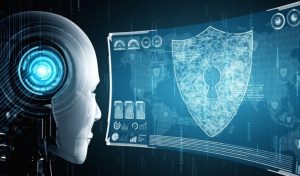Use of behavioral AI to monitor threat scenarios
4 min readTable of Contents
Cyber threats have become more subtle, sophisticated and dangerous – but cybersecurity has a weapon in the form of artificial intelligence (AI).
Modern cyber threats come in the form of phishing, ransomware, denial-of-service (DoS), malware and spyware – and they are deceptive and effective.
Behavioral AI, as the name suggests, analyzes the behavior of objects such as a system, files, emails or attachments to identify and flag or remove threats.
For example, behavioral AI could detect and flag anomalies in the patterns when a dormant account at a financial institution suddenly becomes hyperactive and receives multiple high-value transactions.
Not only can such events bypass standard antivirus solutions, but they can also be dangerous.
However, the role of humans in eliminating threats will be equally important. In many cases, behavioral AI cannot be successful without the cooperation of humans.
What is Behavioral AI?
A computer system consists of various entities, such as the user, end devices such as smartphones or laptops, cloud services, files and data, and network traffic, to name just a few.
All entities can be attacked at different times, putting the computer system or facility at serious risk.
A common example that many of us may have experienced is Google blocking access to a website because it believes it is receiving unusual traffic. Although Google often confuses a normal situation with an anomaly, this is an example of the work of its AI systems.
The AI systems analyze traffic and flag any event that they consider to be an anomaly or deviation. This is behavioral AI at work – the use of AI techniques to analyze and understand the behavior of various entities in a computer system.
Behavioral AI enables behavioral modeling, anomaly detection, user and entity behavior analysis, threat and phishing detection, automated responses, and more – a sophisticated form of cyber threat defense.
Just as humans can detect deviations or changes in the behavior of people they know, behavioral AI can identify deviations from the baseline in the behavior of entities in the computer system.
The role of behavioral AI in combating threats
Behavioral AI is different from the standard cybersecurity approach to dealing with threats, because while the traditional approach can deal with known threats, Behavioral AI is capable of dealing with both known and unknown threats in real time.
Behavioral AI is trained on cyber threats using massive streams of data, allowing it to continually learn about evolving forms of threats.
So when it detects a threat, it triggers an alarm or removes the threat through an automated system.
Automated threat remediation and faster identification is another difference between the traditional approach and the behavioral AI approach.
The traditional approach involves identifying the threat, raising an alarm, and then manually removing the threat. This is a time-consuming process.
The role of Behavioral AI can be summarized as follows:
- Identifying malware in both labeled and unlabeled data. While labeled data provides a basis for identifying suspicious data, unlabeled data has no basis and behavioral AI learns about it as it goes.
- Detection of phishing attempts. Phishing tricks have evolved and are becoming more subtle. For example, emails with malicious content, such as links or attachments, look almost exactly like real emails. AI can also recognize such emails because it has learned about such content.
- Ensuring network security. Computer systems experience high traffic, and sophisticated threats can disguise themselves as normal traffic. However, AI can detect such threats because it is constantly learning.
Case study: AI in action
A Fortune 500 telecommunications company introduced AI to classify encrypted data flowing into its application categories. The main problems the company faced were:
- Manually labeling traffic data proved to be too slow and took up valuable resources.
- Network traffic was analyzed based on a static set of rules, making the system vulnerable to suspicious traffic that did not conform to the rules.
- The existing system struggled to cope with changing data distributions, e.g. B. when responding to alarms or network problem tickets.
- The company needed The company needed multiple tools to ensure the security of its computer system, which was expensive and difficult to manage.
AI has significantly changed the results after its introduction.
- Before artificial intelligence, the system could produce an initial subset of 2,000 examples labeled with the ground truth, but after artificial intelligence, it produced 198,000 additional programmatically labeled examples.
- The AI model was 26.2% more efficient than its predecessor.
- The AI was 77.3% more accurate than the rules-based approach of the previous system used by the company.
Restrictions
AI has redefined cybersecurity management, and many case studies have proven its usefulness. However, AI is not a foolproof solution, at least not yet.
It is subject to restrictions that raise questions about its effectiveness, including:
- AI is an evolving technology that is still struggling to provide precise solutions to cyber threats. As AI is used to combat cyber threats, questions are being raised about its performance and reliability in countering threats.
- AI is not yet robust enough to handle the range of complex measures required to recover from attacks. One reason for this is the lack of precision and accuracy, which makes them not trustworthy enough for engineers.
- Cyber attackers are also using AI, making the threats even more sophisticated and effective.
The bottom line
We must not forget that AI is still an evolving technology.
The limits are real, and companies are faced with the question of how much they should trust AI. Still, using AI as part of an arsenal of cybersecurity tactics is proven to be beneficial.
Probably the best course of action is to not get carried away by hype, objectively evaluate the capabilities of AI compared to traditional systems, and find a combination of the two that suits you or your company.
Crypto exchanges with the lowest fees 2023






